Abstract
OBJECTIVES: The authors present preliminary results on health-related outcomes of a randomized trial of telehealth interventions designed to reduce the incidence of secondary conditions among people with mobility impairment resulting from spinal cord injury (SCI). METHODS: Patients with spinal cord injuries were recruited during their initial stay at a rehabilitation facility in Atlanta. They received a video-based intervention for nine weeks, a telephone-based intervention for nine weeks, or standard follow-up care. Participants are followed for at least one year, to monitor days of hospitalization, depressive symptoms, and health-related quality of life. RESULTS: Health-related quality of life was measured using the Quality of Well-Being (QWB) scale. QWB scores (n = 111) did not differ significantly between the three intervention groups at the end of the intervention period. At year one post discharge, however, scores for those completing one year of enrollment (n = 47) were significantly higher for the intervention groups compared to standard care. Mean annual hospital days were 3.00 for the video group, 5.22 for the telephone group, and 7.95 for the standard care group. CONCLUSIONS: Preliminary evidence suggests that in-home telephone or video-based interventions do improve health-related outcomes for newly injured SCI patients. Telehealth interventions may be cost-saving if program costs are more than offset by a reduction in rehospitalization costs, but differential advantages of video-based interventions versus telephone alone warrant further examination.
Full text
PDF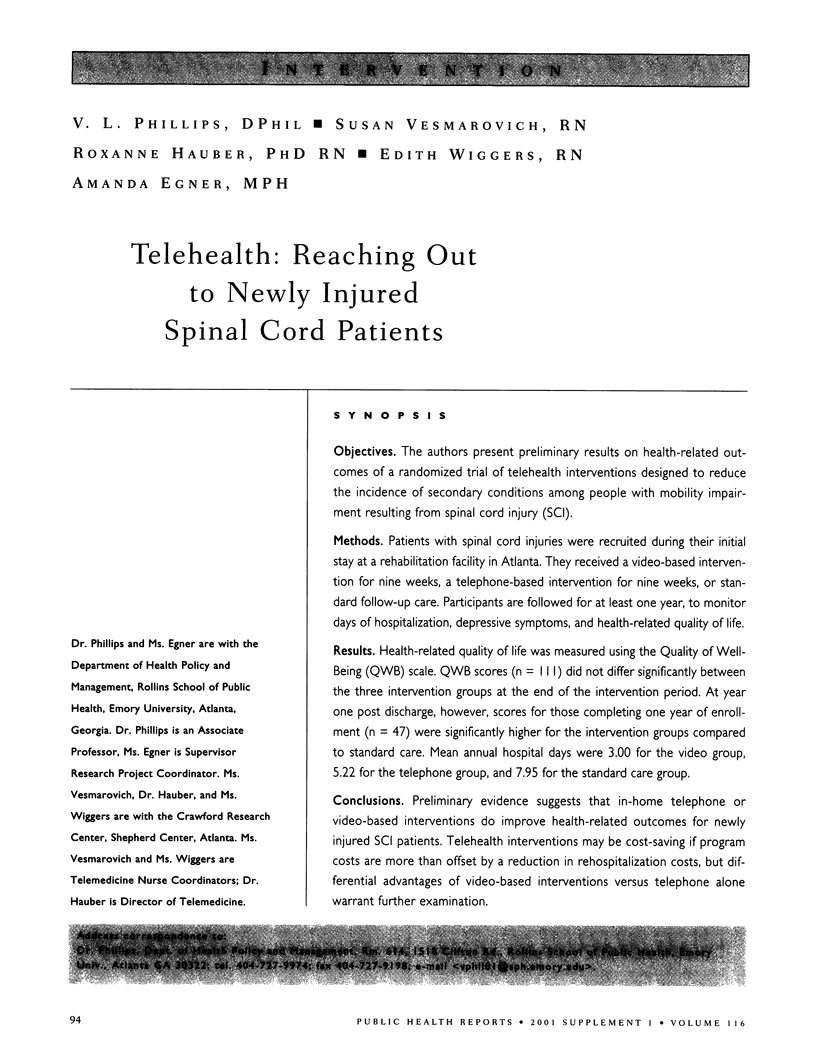

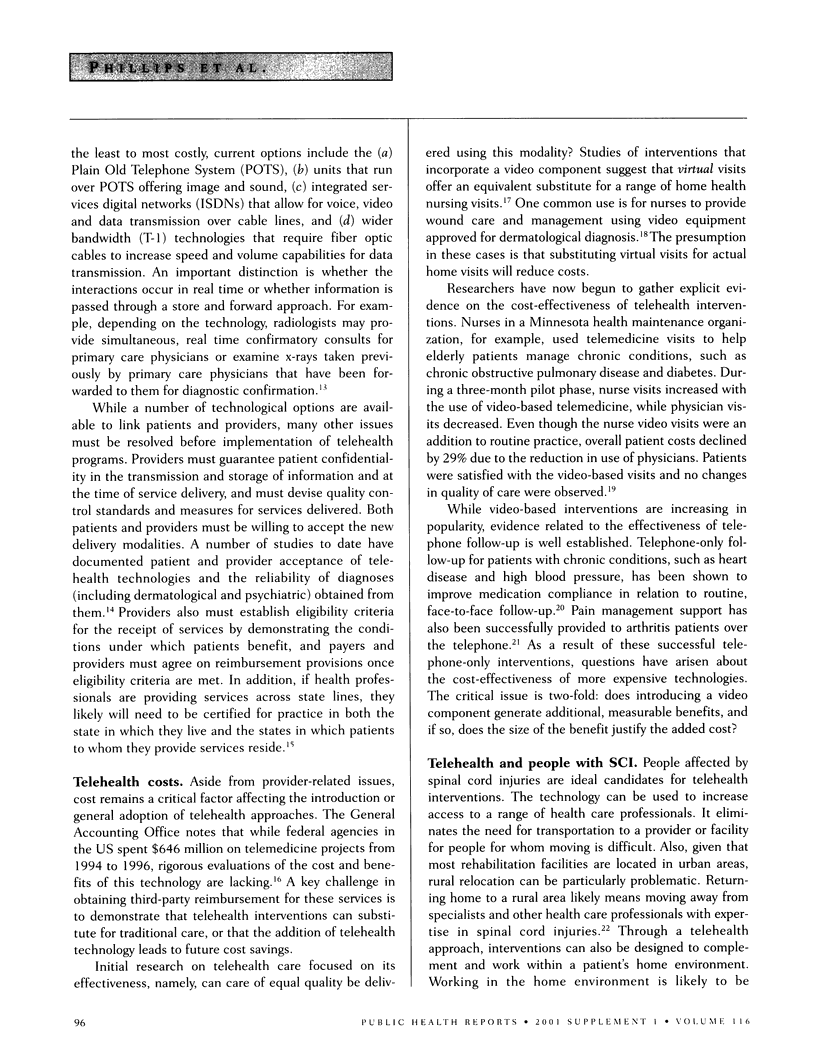
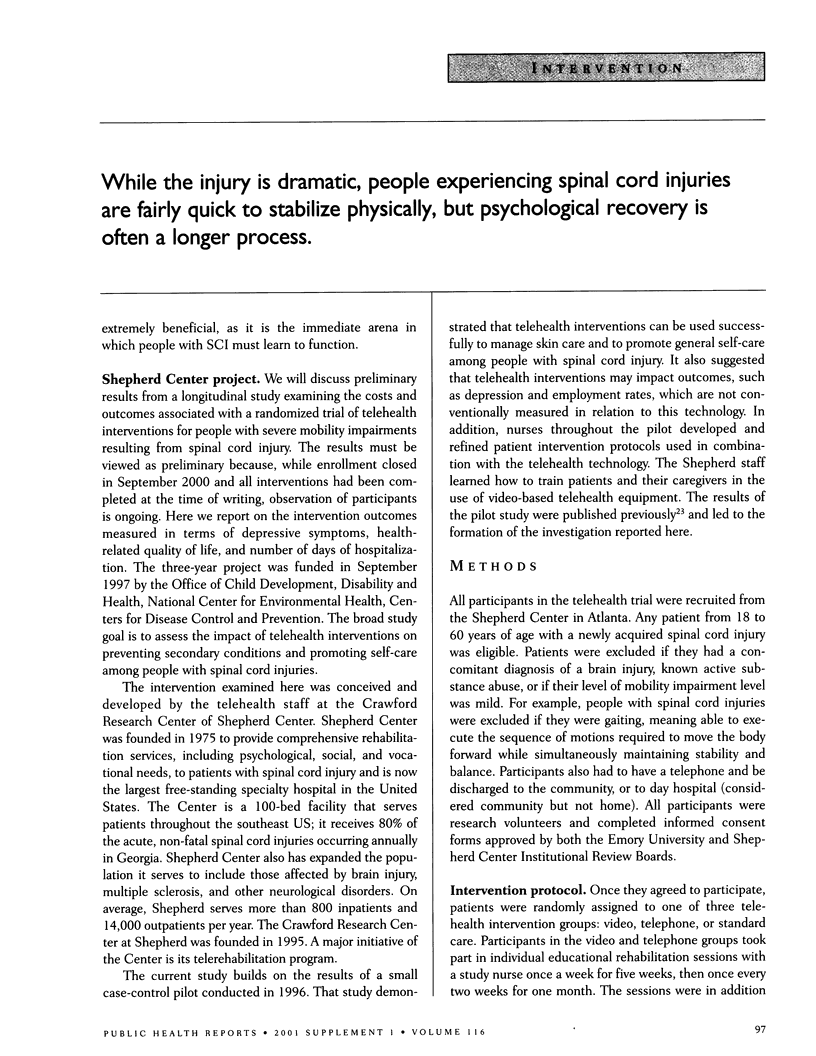
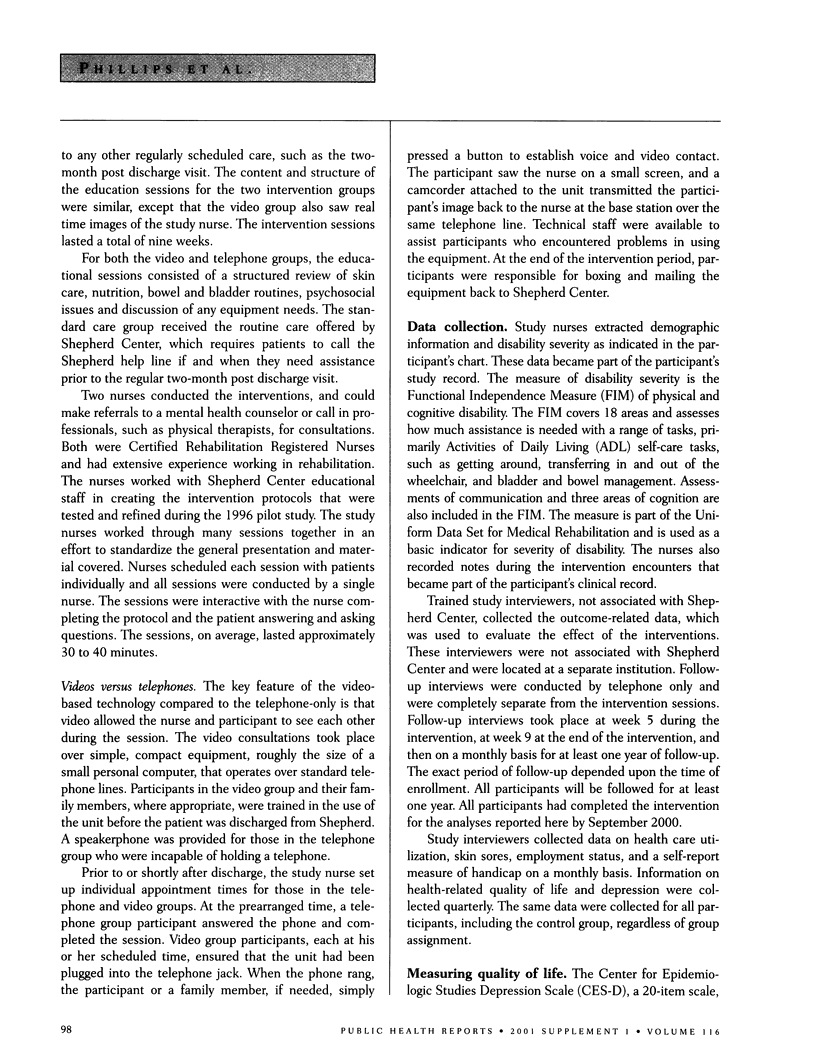
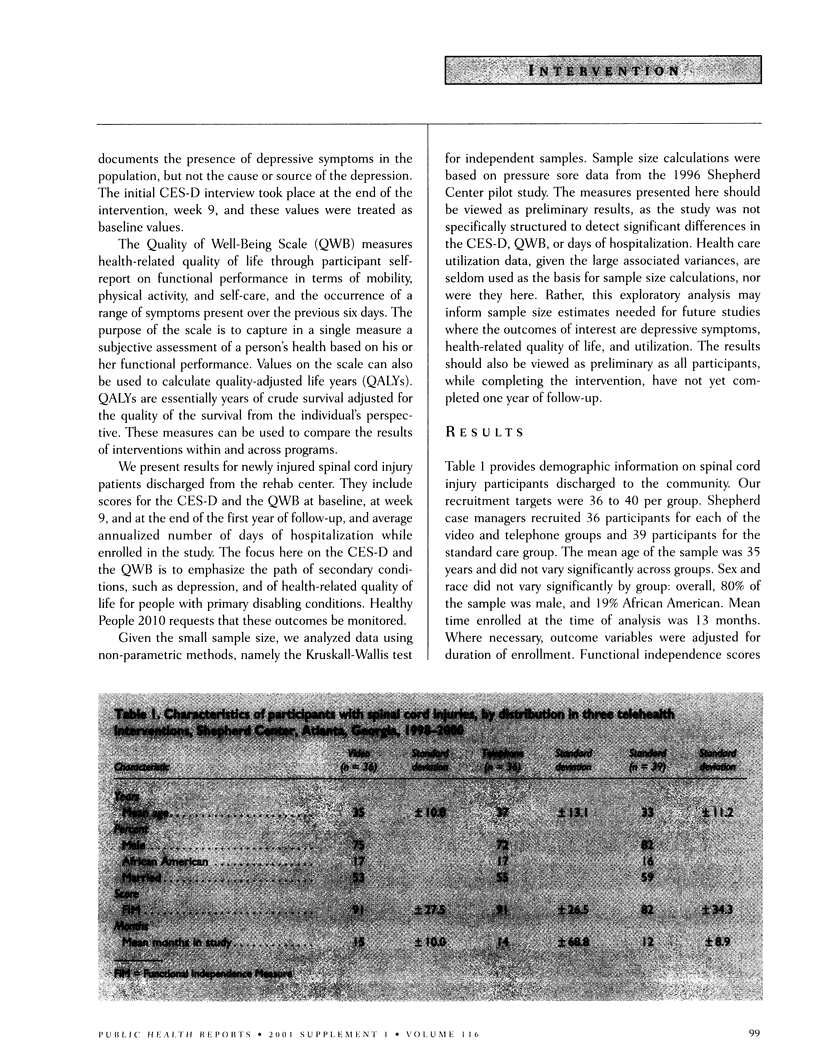
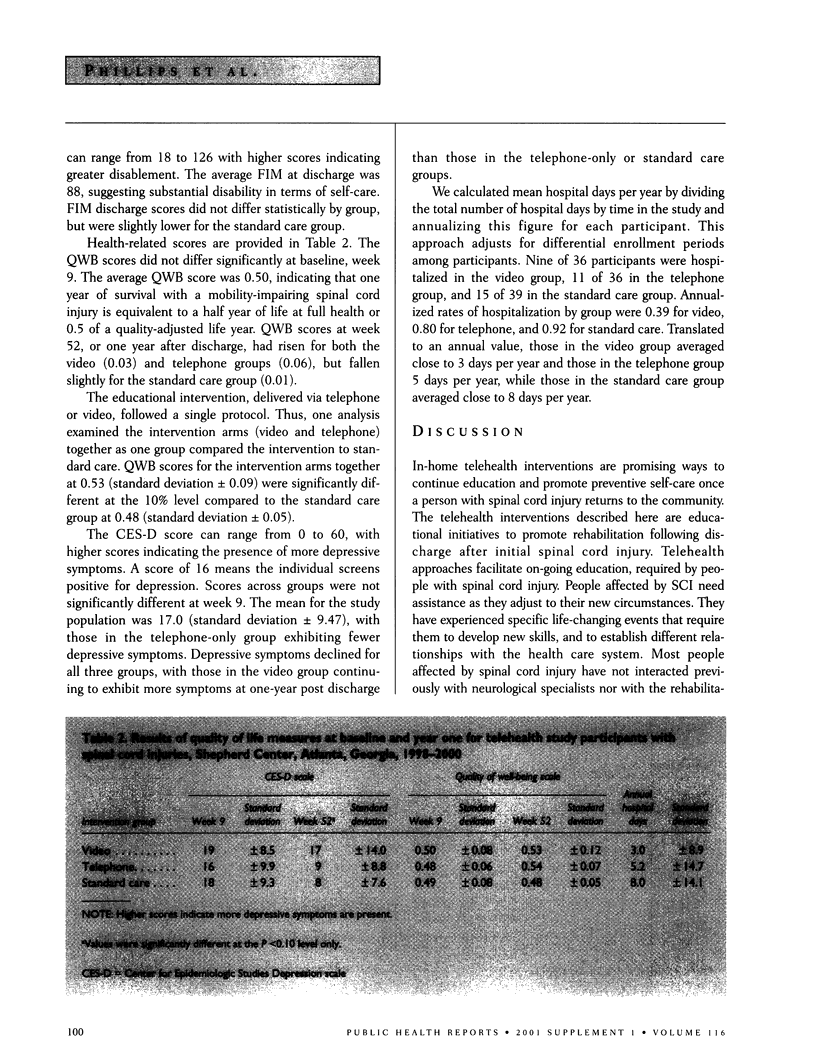

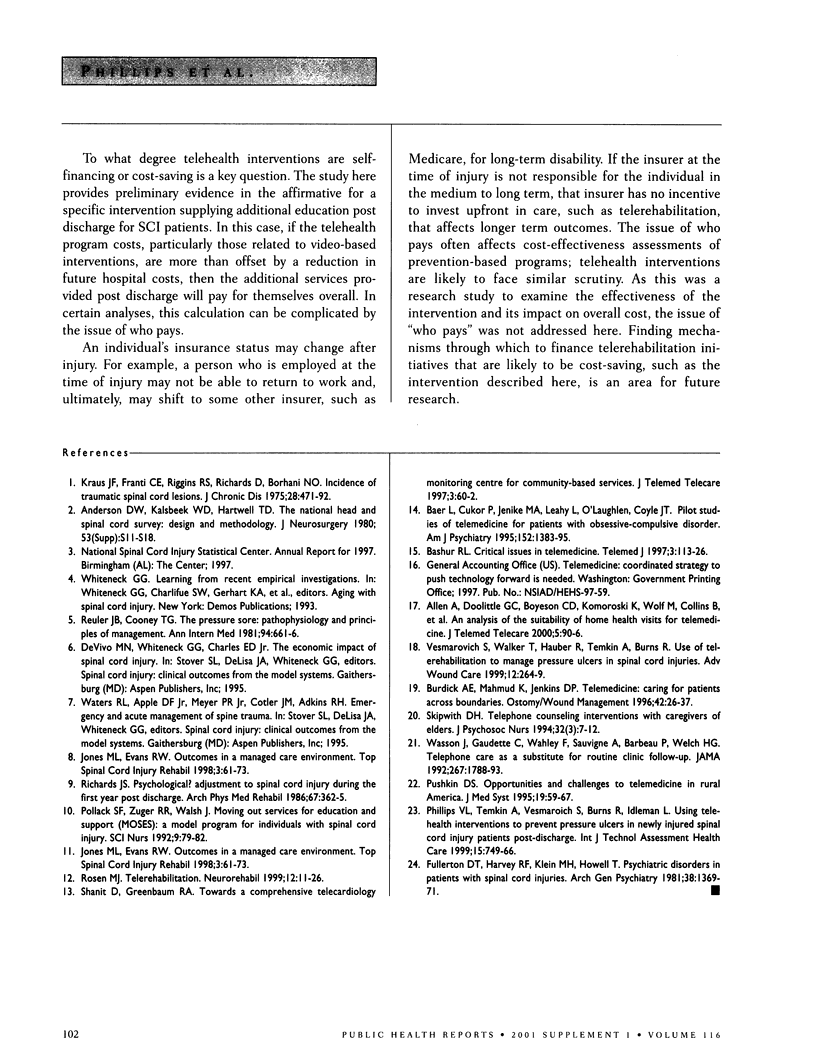
Selected References
These references are in PubMed. This may not be the complete list of references from this article.
- Allen A., Doolittle G. C., Boysen C. D., Komoroski K., Wolf M., Collins B., Patterson J. D. An analysis of the suitability of home health visits for telemedicine. J Telemed Telecare. 1999;5(2):90–96. doi: 10.1258/1357633991933387. [DOI] [PubMed] [Google Scholar]
- Baer L., Cukor P., Jenike M. A., Leahy L., O'Laughlen J., Coyle J. T. Pilot studies of telemedicine for patients with obsessive-compulsive disorder. Am J Psychiatry. 1995 Sep;152(9):1383–1385. doi: 10.1176/ajp.152.9.1383. [DOI] [PubMed] [Google Scholar]
- Burdick A. E., Mahmud K., Jenkins D. P. Telemedicine: caring for patients across boundaries. Ostomy Wound Manage. 1996 Oct;42(9):26-30, 32-4, 36-7. [PubMed] [Google Scholar]
- Fullerton D. T., Harvey R. F., Klein M. H., Howell T. Psychiatric disorders in patients with spinal cord injuries. Arch Gen Psychiatry. 1981 Dec;38(12):1369–1371. doi: 10.1001/archpsyc.1981.01780370071010. [DOI] [PubMed] [Google Scholar]
- Kraus J. F., Franti C. E., Riggins R. S., Richards D., Borhani N. O. Incidence of traumatic spinal cord lesions. J Chronic Dis. 1975 Oct;28(9):471–492. doi: 10.1016/0021-9681(75)90057-0. [DOI] [PubMed] [Google Scholar]
- Phillips V. L., Temkin A., Vesmarovich S., Burns R., Idleman L. Using telehealth interventions to prevent pressure ulcers in newly injured spinal cord injury patients post-discharge. Results from a pilot study. Int J Technol Assess Health Care. 1999 Fall;15(4):749–755. [PubMed] [Google Scholar]
- Pollack S. F., Zuger R. R., Walsh J. Moving Out Services for Education and Support (MOSES): a model program for individuals with spinal cord injury. SCI Nurs. 1992 Aug;9(3):79–82. [PubMed] [Google Scholar]
- Puskin D. S. Opportunities and challenges to telemedicine in rural America. J Med Syst. 1995 Feb;19(1):59–67. doi: 10.1007/BF02257191. [DOI] [PubMed] [Google Scholar]
- Reuler J. B., Cooney T. G. The pressure sore: pathophysiology and principles of management. Ann Intern Med. 1981 May;94(5):661–666. doi: 10.7326/0003-4819-94-5-661. [DOI] [PubMed] [Google Scholar]
- Richards J. S. Psychologic adjustment to spinal cord injury during first postdischarge year. Arch Phys Med Rehabil. 1986 Jun;67(6):362–365. [PubMed] [Google Scholar]
- Skipwith D. H. Telephone counseling interventions with caregivers of elders. J Psychosoc Nurs Ment Health Serv. 1994 Mar;32(3):7–12. doi: 10.3928/0279-3695-19940301-05. [DOI] [PubMed] [Google Scholar]
- Vesmarovich S., Walker T., Hauber R. P., Temkin A., Burns R. Use of telerehabilitation to manage pressure ulcers in persons with spinal cord injuries. Adv Wound Care. 1999 Jun;12(5):264–269. [PubMed] [Google Scholar]


